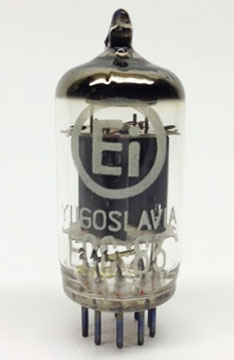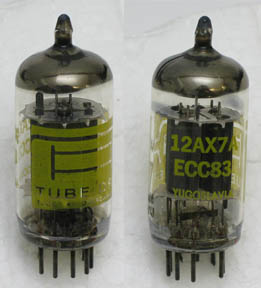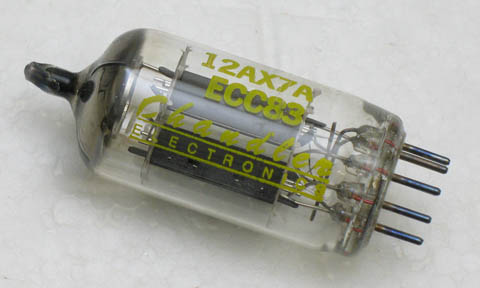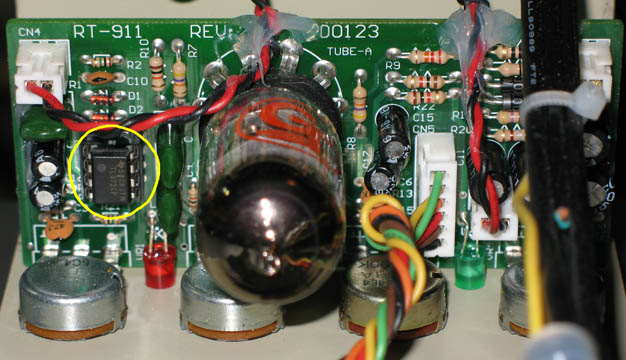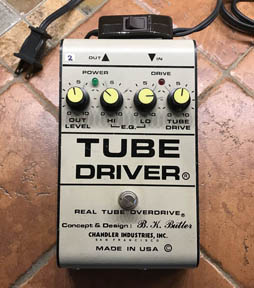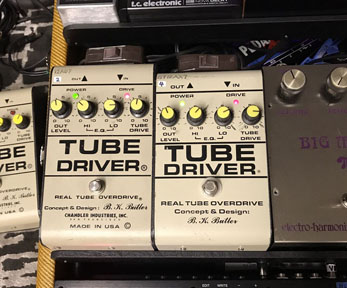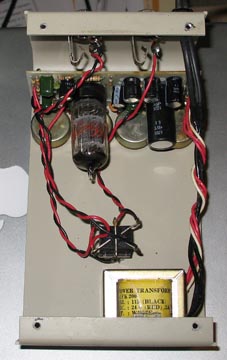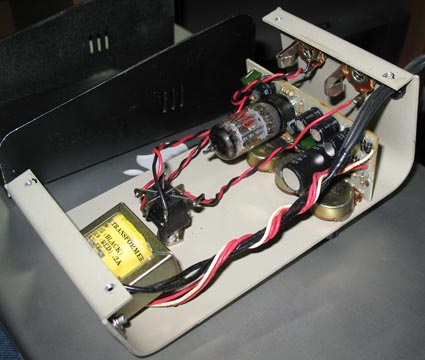Kitís Secret Guitar, Gear, and Music Page
Guitar stuff, gear stuff, soundclips, videos, Gilmour/Pink Floyd stuff, photos and other goodies.
Copyright Kit Rae.
VISIT MY SWORDS, KNIVES and FANTASY ART WEBSITE www.kitrae.net
©Kit Rae. Article written in 2007. Last update January 2019
TUBE DRIVER POWER REQUIREMENTS - Most Tube Drivers have an internal transformer that works with the mains voltage of the country it was made for. The original Tube Drivers were made with transformers that run on 110-120VAC for the North American market. Later some Tube Drivers and Real Tubes were made for the European market with transformers that ran on 220-240VAC. DO NOT plug a Tube Driver made with a 110-120V transformer into a 220-240V power outlet. It will draw 4x the power it needs, causing it to overheat and damage the circuit. Conversely, if you plug a Tube Driver with a 220-240V transformer meant for the Eurpoean market into a 110-120v outlet, it will only draw 1/4 the power it needs and may not function properly. To run a 110-120V Tube Driver on 220-240V mains power, use a step-up voltage converter. To run a 220-240V Tube Driver on 110-120V mains power, use a step-down voltage converter. Or, have the transformer inside replaced with one that works with the mains voltage of your country.
The 911 Tube Drivers that B.K. Butler has been making since 2005 could be ordered with either voltage, so be sure you are buying a Tube Driver with the correct voltage for your country. At some point Butler started using a toroid transformer that runs from 120-240VAC which works with either mains power.
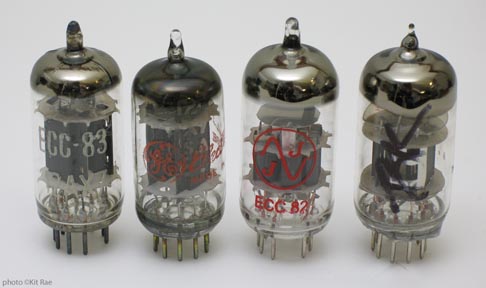
TUBE DRIVER MODIFICATIONS - Changing Tubes - This is the simplest mod for a Tube Driver, but it makes a very minumal difference. Some people find the distortion too rough or harsh sounding at low drive settings and want a smoother, cleaner sound. Since the clipping distortion is generated by the op-amp in a Tube Driver, not the tube, it makes sense that changing the tube would have little effect on the level of distortion. A lower gain tube will not necessarily reduce the amount of distortion, but it can slightly smooth and tame it at low drive levels by altering the compression and tone color of the distortion. Different brands of tubes or tube types may alter the sound in different ways. Some people do not really hear any difference when swapping tubes, and others claim drastic differences. In my experience, the differences are only noticeable at very low drive settings on the TD. I have not heard any difference when swapping tubes when using high volume/high gain settings.
Below is what the original 1980s BK Butler/Chandler Tube Driver Manual said about the tubes:
The12AT7 tube in yout Tube Driver has been carefully selected to give years of continuous service. It is not advisable to use an up-graded tube due to the unique circuitry requirements of the Tube Driver, If it becomes necessary to replace the tube, GE 12AX7A is the only recommended replacemenr. Normal tube life is between 2-4 years.
The manual included with the 911 Tube Driver that came later omits all of that information. Below is what the Chandler (knockoff) Tube Driver Manual somewhat misleadingly said about the tubes:
You can change the tone of your 'Tube Driver' pedal with a very simple modification, which can be completed with only a screwdriver. To add gain, you can substitute a 12AT7 tube, which will give more distortion and beefs up the mid range frequencies. To have a cleaner, more vintage sound, you can substitute a 12AU7 tube, which will clean up the tone and thins out the midrange. This tube works very well for players seeking a cleaner tone in the lower settings of the drive control.
The Chandler manual then went on to let you know that they sell "specially selected high or low gain tubes" for the Tube Driver, so I think this was just an attempt to get additional sales. In typical power amplifiers the preamp tubes can easily last 15 years or more with moderate use and 10 years or more with very heavy use. Since the Tube Driver is a starved plate design, the tube will last much longer (even though the original manual said normal life was 2-4 years!). Chances are you will never have to replace it with moderate use, but if you want to experiment with different tubes, it is a rather simple mod. Unplug the TD power cable and remove the enclosure screws to lift the upper part of the enclosure off. The tube is usually glued to the tube socket with a silicon rubber, but you can peel or cut that away, then gently pull the tube from the socket. When replacing with a different tube, be sure the pins are lined up with the pin holes in the socket.
Shown above (left to right) - An original smooth long-plate EI Yugoslavian ECC83 tube, a re-branded EI tube marked "TUBE DRIVER"
that shipped with the original BKB/Chandler Tube Driver in 1986-87, and the same tube branded "CHANDLER ELECTRONICS"
that shipped with some 1987 Tube Drivers and the cheap Chandler branded Tube Drivers in 1988-89.
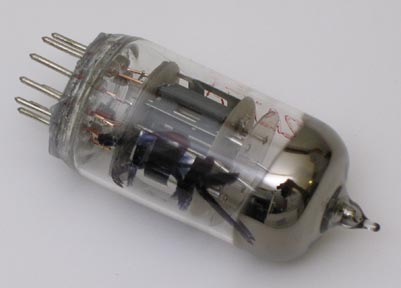
Shown above - A short plate, unbranded Goldern Dragon 12AX7 that ships with the reissue Tube Drivers made since 2006.
Very few factories make vacuum tubes the way they used to be made these days, so some modern tubes may lot last as long, or may be defective or microphonic right out of the box compared to older NOS tubes. Original BKB/Chandler branded Tube Drivers from 1986-87, and the cheap Chandler version from 1988-89, shipped with a long plate EI Yugoslavian ECC-83 (12AX7) tubes. Early units shipped with stock EI branded tubes and later production had custom branding. There was also a version branded "Real Tube" that shipped with the Tube Works 911 Tube Drivers in the 1990s and some early 911 reissues in 2006. Butler called those 1970 'NOS' Yugo tubes, meaning "new old stock" tubes made. He apparently ran out of them in 2006.
So what is a "Yugo" or "pre-war" Yugo? They are clones of the famed Telefunken smooth plate, diamond mark vacuum tubes, that were originally made in West Germany. EI (Elektronska Industrija) bought the Telefunken tooling and made their version made in Yugoslavia in the 1970s and 1980s. EI's business collapsed around 1992 due to war, and the company officially went bankrupt in 2016. Practically all ECC83/12AX7A tubes with the smooth, long gray plates that were made in Yugoslavia before the war are the same tube. Many are branded EI, but EI also custom branded them for other companies like RCA, General Electric, Raytheon, Groove Tube, National, Seimens, Audio Research Corp, and Chandler. You can find used and NOS (new old stock) pre-war Yugos by doing an internet search for "Ei Yugoslavia ECC833 12AX7 smooth long plate" or add one of those brand names if you are looking for a specific brand. They are good neutral sounding tubes for Tube Drivers, but a large portion of them were microphonic, so it is best to buy one that has been tested from a trusted supplier.
The stock tube that shipped with the 911 Tube Driver made since 2006 (at the time I wrote this) was a Golden Dragon 12AX7 - a low noise, hi-fi preamp tube. It was unmarked, other than "BK" written on it with a Sharpie. The distortion on my first 911 TD was a bit too rough at low drive settings for my taste, so I swapped out the Goldeen Dragon. I tried various tubes, including an old GE 12AU7, EI Yugoslavian 12AX7, and JJ Electronics ECC83/12AX7 in my current TDs. I thought a few of the 12AU7 tube brands I tried made the distortion slightly less fuzzy sounding, giving the individual strings in a chord more clarity and giving single notes a smoother sound, but I probably could not tell any differemce in a blind test.
MODIFICATIONS - Changing op-Amps - As stated, most of the hard clipping distortion comes from the op-amp, not the tube, and not all op-amps clip the same way. You may notice that the op-amp on the circuit board is mounted in a socket in the modern BKB Tube Driver, so you can swap out other higher quality op-amps to see if you like the sound better. The op-amp is the small black boxed IC chip with 8 pins on the left hand side of the circuit in the photos below. You can pull it out by hand and replace it with any other 8 pin dual op-amp chip. I tried a JRC4558D (used in the older TD), and another that I think was an OP275. Those did not improve or change the sound to my ears at all, but I did have good results using Burr Brown OPA2134 op-amps. It was noticably smoother at very low gain and I liked it better than the stock TL072 chip that shipped with my 911 TD in 2007. It only made a minor difference however. In a blind test, most people would find it difficult to hear much difference, and I doubt you would hear any difference in a band mix.
MODIFICATIONS - Add an External Power Switch - Some people like to leave their pedalboard power on for long periods, even when not playing. This can unnecessarily shorten the life of the vaccuum tube inside the Tube Driver. To avoid unplugging the power cord when not is use, you can easily add an external power switch. A simple lamp cord switch can be added to the power cord, then velcroed or glued to the back of the enclosure. Lamp switches are inexpensive and can be found at hardware stores or online stores like Amazon. They only require one line in the cord to be cut and wired to the two contacts inside the switch. For three prong cords, be sure and cut only one of the outside copper lines in the cord, not the center ground line.
MODIFICATIONS - Remove the Internal Power Supply to Reduce Hum - To avoid the noise issues caused by the internal transformer being so close to the audio circuit (described in the KNOWN ISSUES section below), the transformer can be moved outside of the TD enclosure. This can be done by removing it, enclosing it in a protective plastic or metal enclosure, and running an extension cord back to the Tube Driver.
You can also remove the transformer and add an AC power supply jack on the back of the enclosure so it can be powered by an AC to AC (not AC to DC) external power supply. According to Butler, if your mains voltage is 110-120v, the transformer needs to run at least 12.6VAC, rated at least 150-200mA. Most transformers running 110VAC or 120VAC primary (input from wall) to 12V secondary (output) should work, as long as it outputs at least 150-200mA. If it outputs more than 200mA, that is fine. The pedal will only draw as much power as it needs, so 500mA to 1A will work, but may cost a bit more. Use a transformer with a standard 2.1mm x 5.5mm barrel output plug.
First disconnect the existing internal transformer that is riveted or screwed to the front end of the enclosure. Note which leads from the transformer run to the circuit board. Drill a hole and install the a 2.1mm x 5.5mm barrel plug jack on the back of the enclosure. This is the standard power jack size found on most pedals, like Boss and Ibanez. The polarity of the jack does not matter like it does on a standard pedal running DC, since the Tube Driver runs off AC. Solder the leads from the jack back to the circuit board. Plug the external AC power supply in and you are ready to go.
This is exaclty what Chandler did with their unauthorized copy of the Tube Driver in 1988, only it ran on 24vAC, 400mA. This is what their Owners Manual said: By locating the transformer outside of the box we have been able to accomplish three objectives: Noise and hum is significantly reduced. Shock hzard has is practically eliminated. The Tube Driver now conforms to international UL standards.
It is also possible to convert the Tube Driver to DC power so it can run from a standard pedal power supply, as is the case with the Tube King and some Taiwan made Real Tube pedals. It is more complicated however, and requires running the leads from the DC power jack before the filtering section and after the rectifier section of the circuit. It is best to have an electronics tech do that unless you have some experience with this sort of thing.
KNOWN ISSUES - Below are some of the well known quirks with this pedal that may cause problems for people with certain setups, and some ideas for how to correct them or deal with them in your signal chain.
Hum Noise - The primary issue I have heard about is hum noise. Some people have hum noise so bad that it makes the pedal unusable. I have heard this from owners of old BKB/Chandler Tube Drivers, Tube Works Real Tube overdrives, and the later 911 Tube Drivers. It sounds like 50-60Hz noise or a ground loop hum. There are no shielded leads in the circuit and the input jack ground wire runs to the pcb, but the output jack is grounded directly to the enclosure, with no separate ground wire to the circuit. It's not a grounding or shielding problem however. The hum seems to be caused primarily by the proximity of the internal transformer to the Tube Driver circuit, which is a big no-no for effect pedal circuits. Butler has acknowledged that noise issues in the older units were due to noisy transformers and sometime around 2008-2009 he began using low noise toroidal transformers.
The hum issue seems to be more prevalent with people running 220-240v than 110-120v, but not always. I had one Real Tube pedal with a hum problem, but that actually turned out to be caused by a bad ground, so I have no experience with the larger hum issue myself. All the various version of the TD circuit I have owned or tried have been hum free, with the exception of a low buzz on one of the 1987 Tube drivers when using single coil pickups.
The TD runs off AC power, not DC like most effect pedals. It uses a built in transformer (12.6VAC at 200mA) and has its own AC power cable, unlike most other effect pedals which use an external power transformer, plugged into a jack on the pedal. For the 911 reissie TDs Butler has changed to lower noise toroidal transformers like Pete Cornish uses in his custom pedal boards. That did not solve the problem though, as I have read comments from owners who replaced the transformer with the exact toroidal that BKB uses, and still have noise issues. All of my TDs have the older type transformers and I have never had this type of noise issue myself.
The hum sound could also be caused by the AC current used for the tube heaters. Some owners have eliminated the hum by hooking up tube heater pins 4 and 5 and the step down resistor directly to the power transformer output, so it is off the main circuit board. Several websites have details on how to do this.
Output Impedance - There is also a signal impedance issue with Tube Drivers and Real Tube pedals (not so with the USA made Tube King). As a general rule for a pedal board signal chain, you want a low impedance output connected to a high impedance input on each pedal to allow the widest spectrum of audio bandwidth to pass through the chain in order to keep your signal from degrading. The Tube Driver has a buffered, high impedance input, but no output buffer. The passive tone circuit hangs a high impedance signal on the output, so changes in loading and capacitance from long cables or other pedals in the signal chain can result in a loss of bandwidth, usually high frequencies, altering the tone in a negative way. High volume settings can place a load on the Hi and Lo controls, so different volume levels can affect the output sound differently. With improper impedance, some users find that they lose high frequencies, casuing them to increase the treble, which in turn can make makes the sound harsher or spikey. Turning the treble up can also result in a loss of bass with improper impedance. Not everyone encounters this, and it will vary depending on the Tube Driver settings, tube used, and the load from the other pedals your signal chain.
So how does one balance the Tube Driver impedance in the signal chain? By placing a buffered pedal or buffer/line driver with an input impedance around 1MΩ immediately after the TD, or non buffered pedal with a similar high impedance input after it. Simply placing the Tube Driver in a buffered bypass loop that includes an output buffer works as well. Using a lower gain tube like a 12AU7 can also help reduce the output impedance of the Tube Driver.
You can check if there is tone loss caused by an impedance mistmatch by comparing the sound when playing the TD in your pedal board signal chain (with all other effects switched off) to playing with just the guitar into the TD, then directly to the amp. You can also hear this by running two identical Tube Drivers, plugged in back-to-back, directly to the amp. Turn one on and play it at high drive and volume, then swap places keeping the same one switched on, and you can hear how the high impedance output from one changes the sound when going into the other.
How Impedance Works - There is a good article on impedance over on the AMZ website. Here is a simplified explanation. Guitar pickups output a small alternating current (AC) signal that varies from around 10KΩ to 50KΩ, depending on pickups, volume, playing, et cetera. The guitar's output impedance goes higher at high frequencies and lower at low frequencies. A circuit's input impedance is the resistance to that AC signal. It sounds backwards, but we actually want a high resistance, or high impedance, on the input receiving that weak signal. A low resistance will lose power in the pedal circuit, making that signal weaker, so less of it gets to the amplifier. That is what is meant by "loading" the signal. Signal loss means some of the audio frequencies of your tone are lost.
On the other end of the pedal is the output impedance, or the resistance to the AC current leaving the pedal. High output means LESS signal current gets to the output jack, so some audio frequencies are lost. Lower output impedance is better, because MORE of the signal voltage gets pushed through to the amp or next pedal circuit, so more of your audio frequencies are retained.
A good rule of thumb for a well balanced pedal board signal chain is to have the input impedance of each pedal be about 10x larger than the output impedance of the pedal before it. A typical well designed pedal circuit will have an input impedance of 500KΩ - 1MΩ and an output impedance of 1KΩ - 10KΩ. Ibanez/Maxon pedals and some older Boss pedals have an output impedance of 10KΩ. A typical modern Boss pedal, for example, is 1MΩ in, 1KΩ out. The Tube Driver also has 1MΩ input buffer, but no output buffer. Specs for the Tube Driver show a "typical" output impedance of 10KΩ with a moderate drive setting, which is high, but it changes depending on the knob settings and can be much higher - as high high as 90kΩ with high drive and volume settings. That means the input of the pedal or buffered circuit following the TD should be around 900kΩ or higher. A typical input buffer on a Boss has a 1MΩ input impedance, and 1MΩ=1000KΩ, so that type of buffer is a good match to follow the TD. However, some pedals, including older Boss, Electro-Harmonix, and Ibanez pedals, have a low input impedance of 500KΩ or less, which means a loss of some of your TD signal and alteration of the tone if one of those directly follows your Tube Driver in the signal chain.
Faulty Footswitch - Another issue is that the foot switches BKB used in the 2007/2008, and some earlier Tube Drivers, were unreliable. The switches in my 2007 and 2008 TDs broke within a year of use and had to be replaced. I don't know if Butler has since changed to a better switch, but he was aware of the problem and was offering replacements at the time - unfortunately the replacements were the same brand of unreliable switch.
